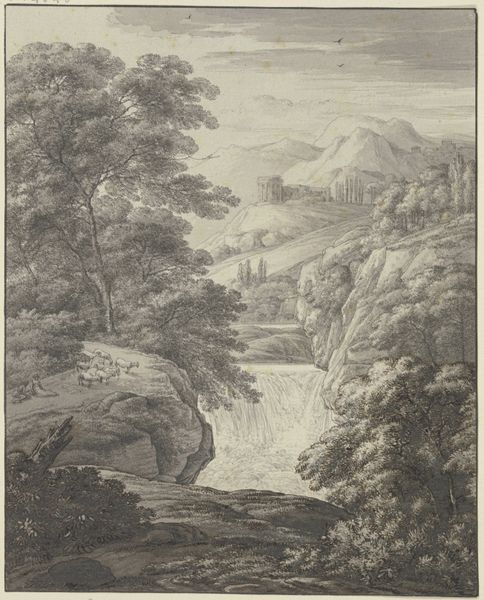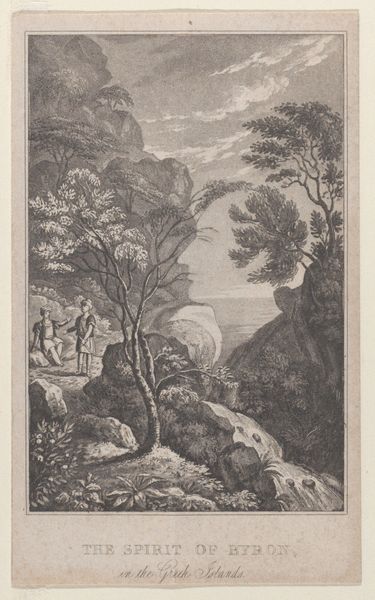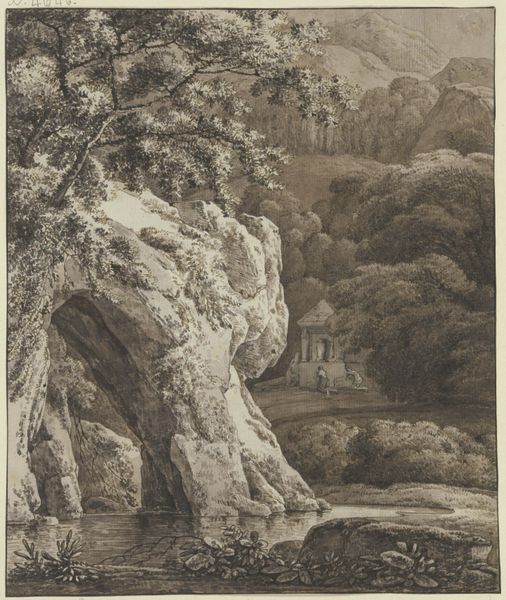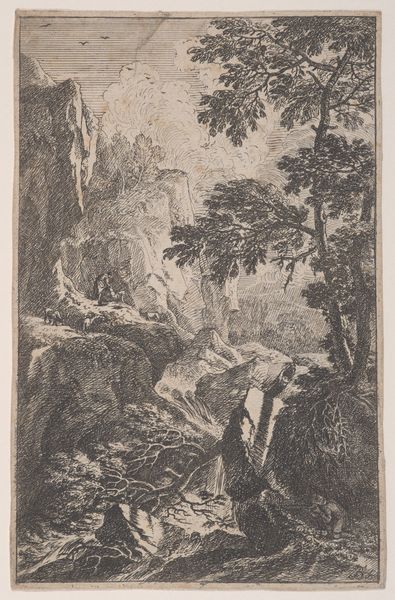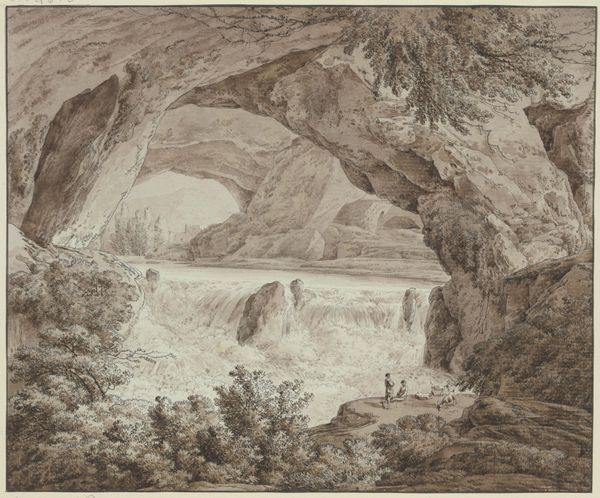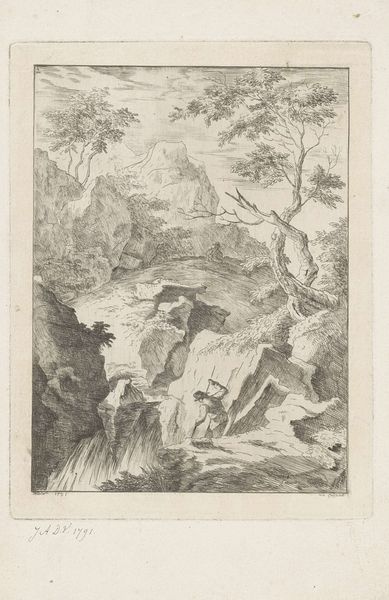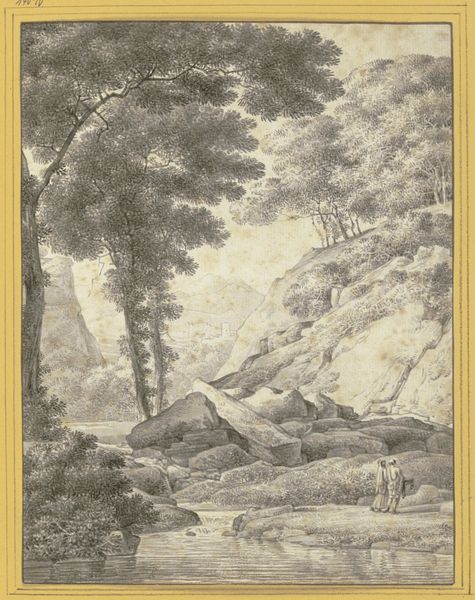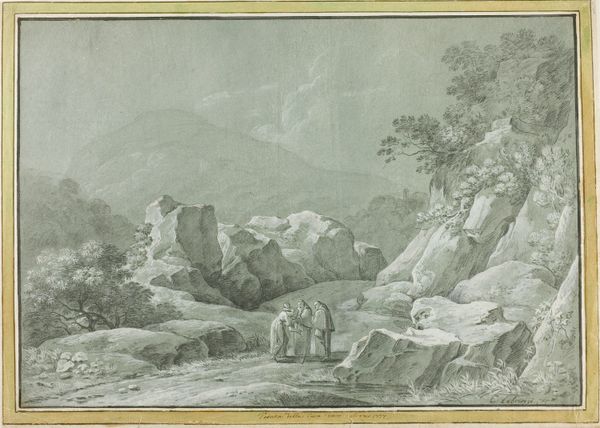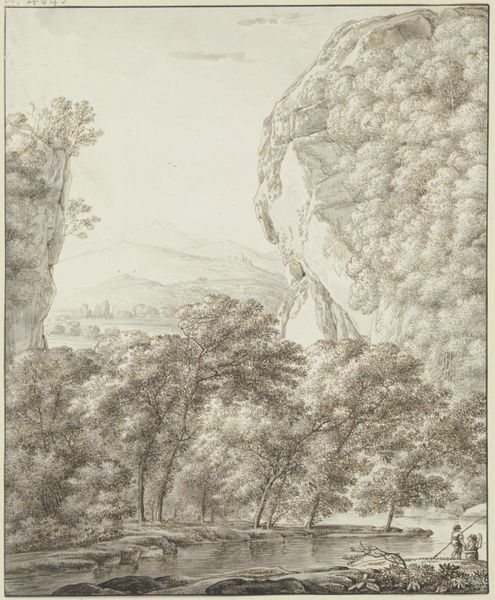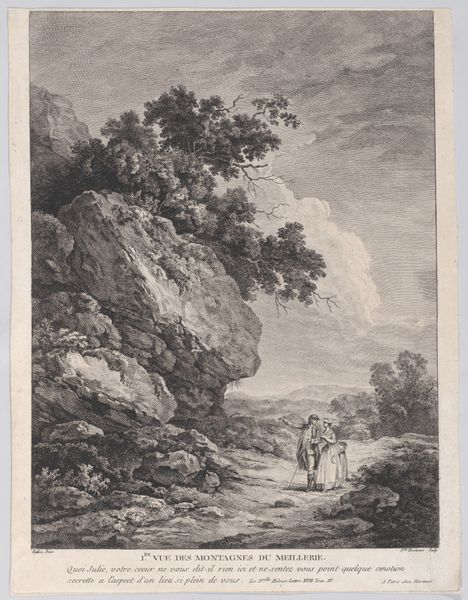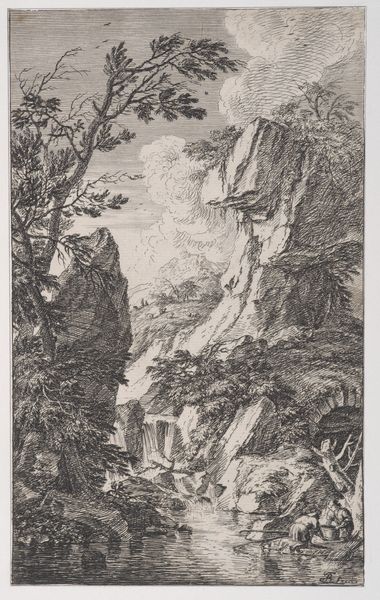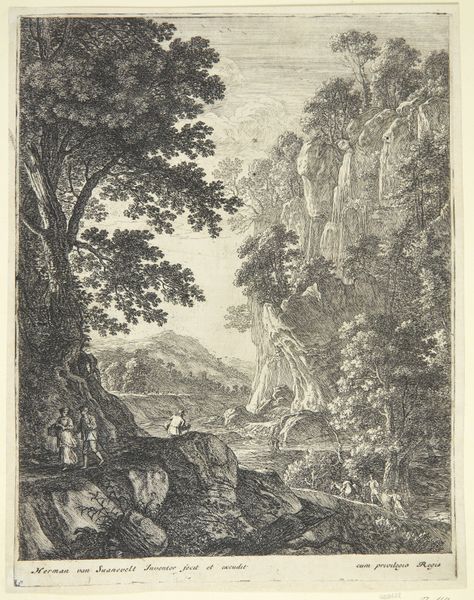
Copyright: Public Domain
Editor: Here we have Adrian Zingg's "Landschaft mit Felsentor" from 1780, rendered in ink and watercolor. It's quite a dramatic scene with that imposing rock arch! What do you see in this piece? Curator: Well, considering Zingg's historical context, I see a deliberate engagement with the burgeoning Romantic movement. Notice how the tiny figures are placed in relation to the grandeur of the natural landscape, emphasizing humanity's smallness in the face of nature. It speaks to a shift in thinking during the late 18th century, wouldn't you agree? Editor: I can see that. There’s definitely a sense of awe and maybe even a bit of fear evoked by the landscape's scale. Do you think there is an influence of the picturesque here? Curator: Absolutely. The composition is deliberately arranged to create a pleasing and ‘natural’ scene for the viewer – or rather, the patrons and institutions who acquired his works. Do you think that these sort of landscape views allowed individuals removed from nature to have access to it through painting? Editor: Yes, certainly! It’s like a portable piece of the sublime for the drawing room, something to spark conversation and reinforce a particular worldview about nature. Do you think the way we see art about nature affects how we perceive environmentalism today? Curator: An excellent question! Images like this not only shaped how people understood the landscape then, but they continue to influence our perceptions of nature as something separate from us, a spectacle to be consumed. It's vital to consider the legacy of these images when discussing contemporary environmental concerns. Editor: That really opens my eyes to how art reflects and influences society's values and beliefs! Thanks so much. Curator: Indeed. I think I understand it a bit better, too!
Comments
No comments
Be the first to comment and join the conversation on the ultimate creative platform.

